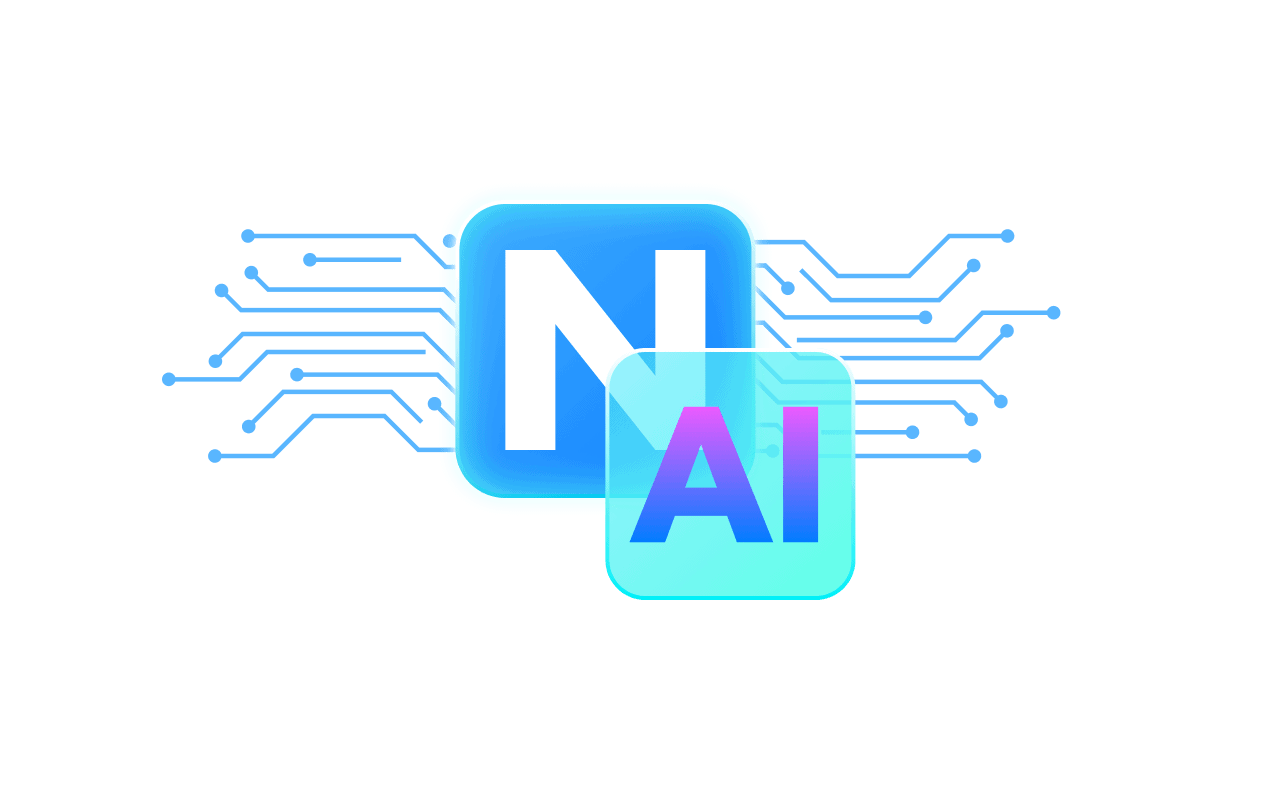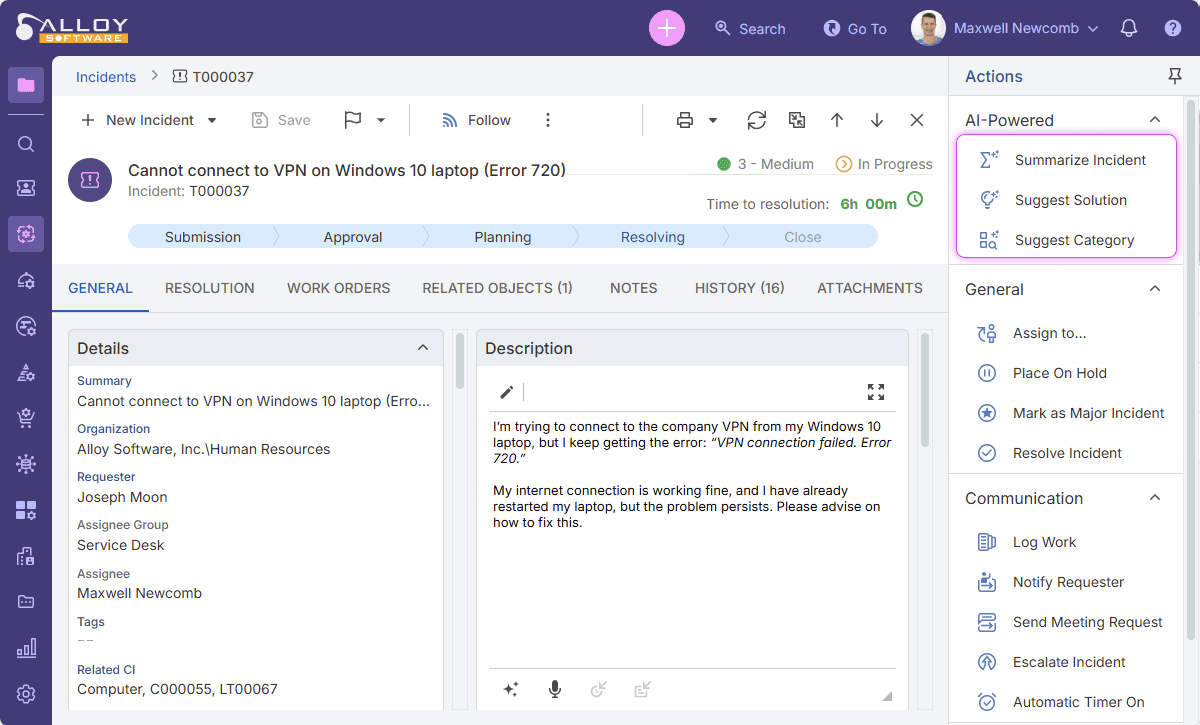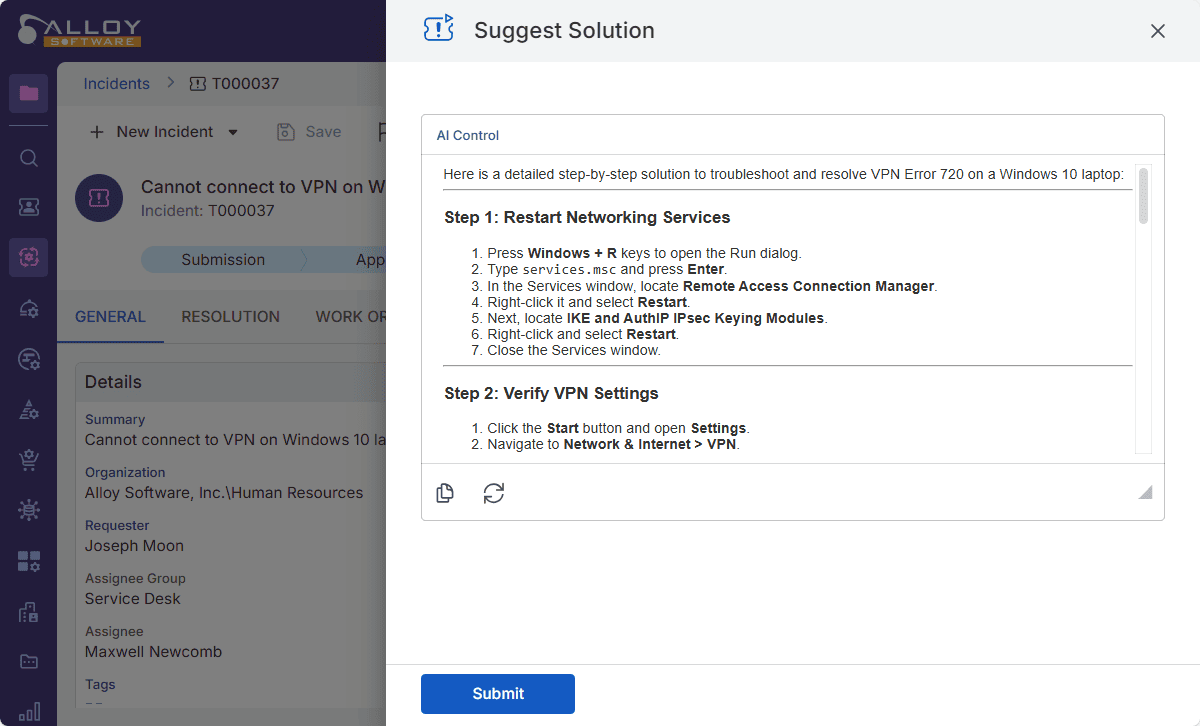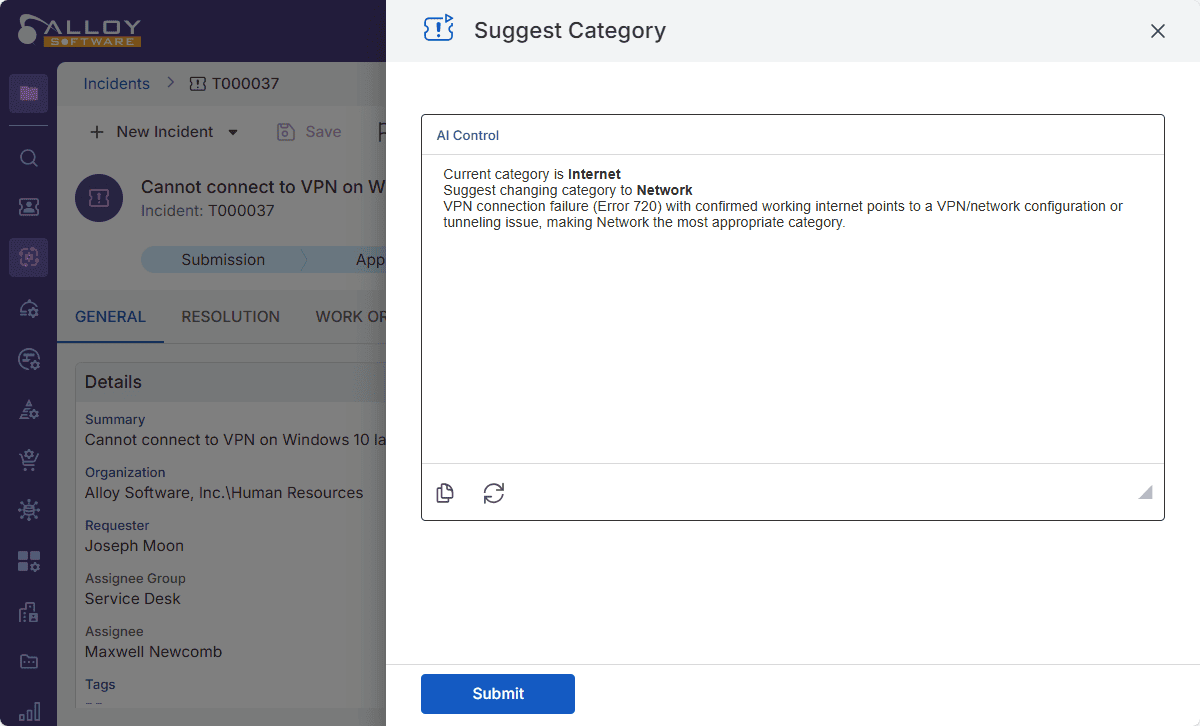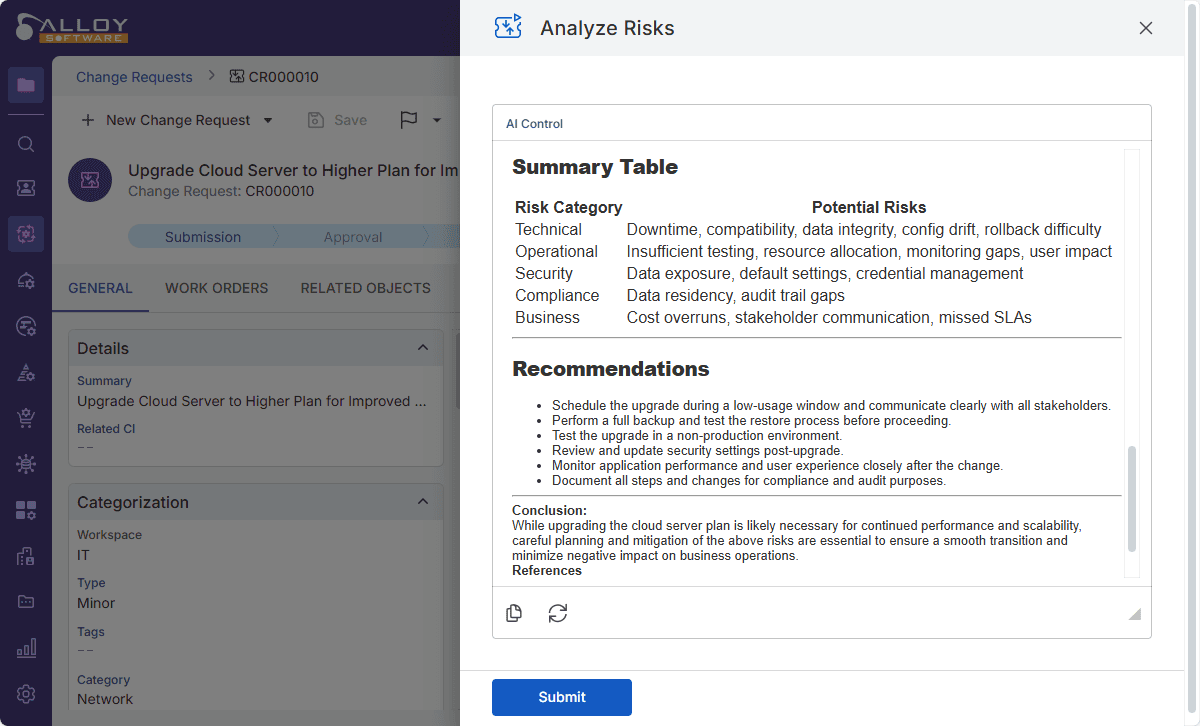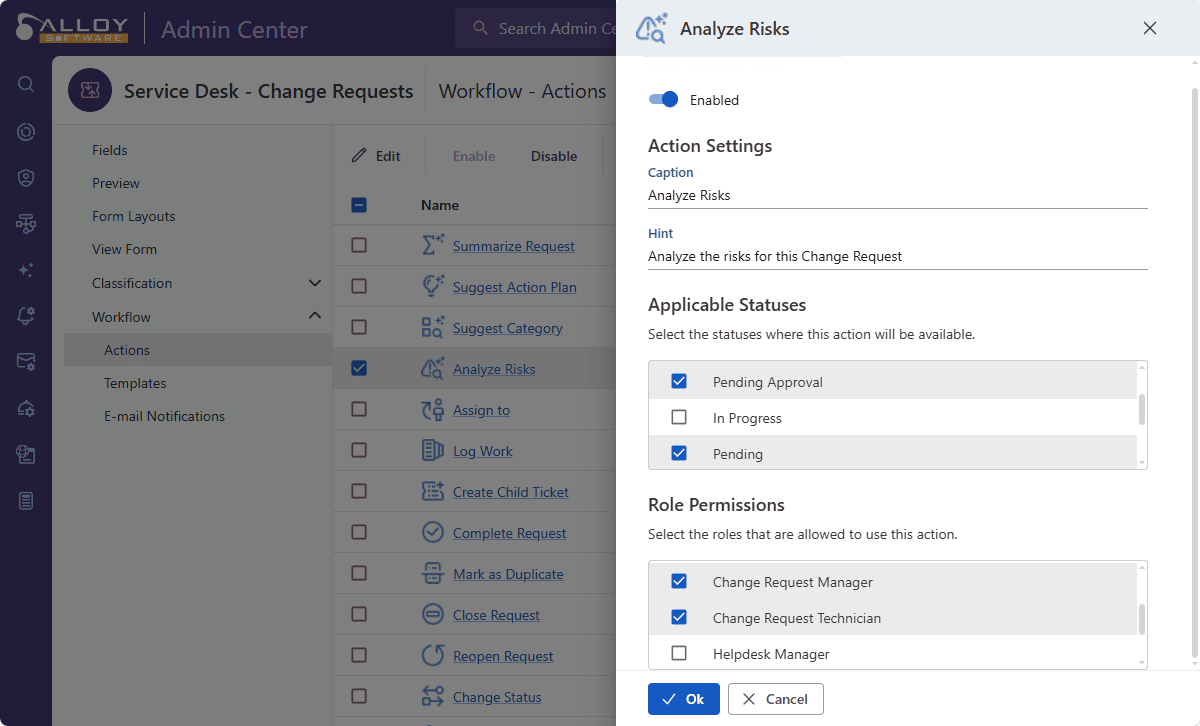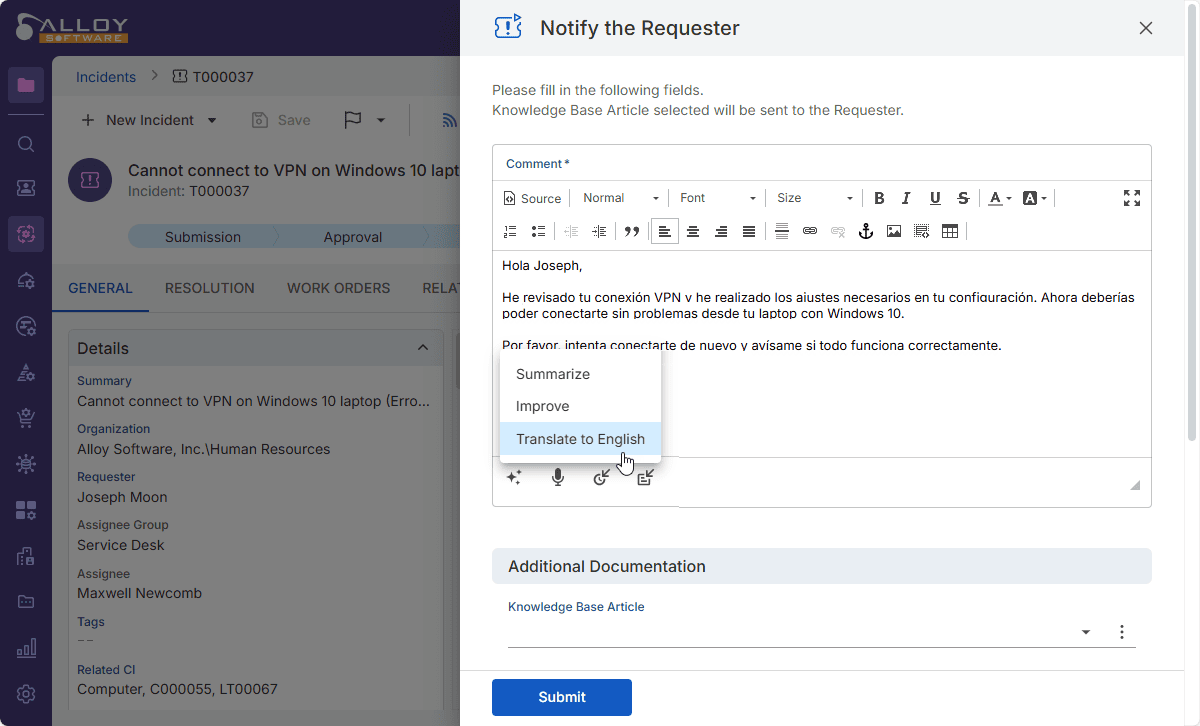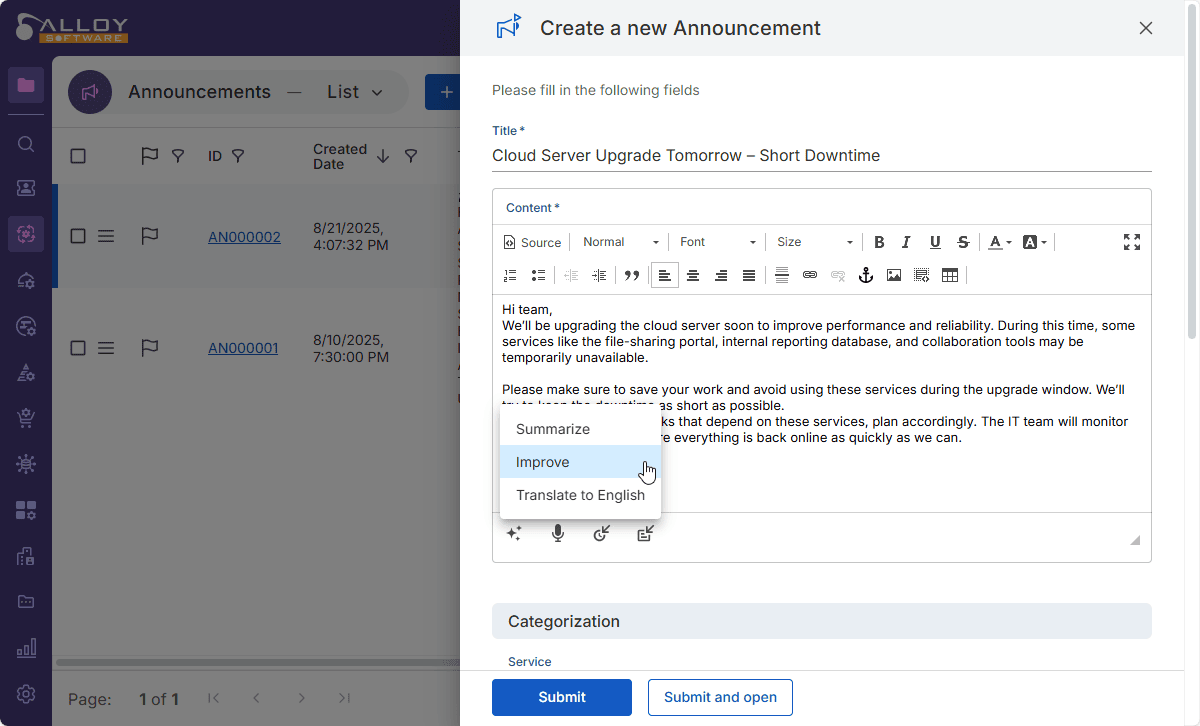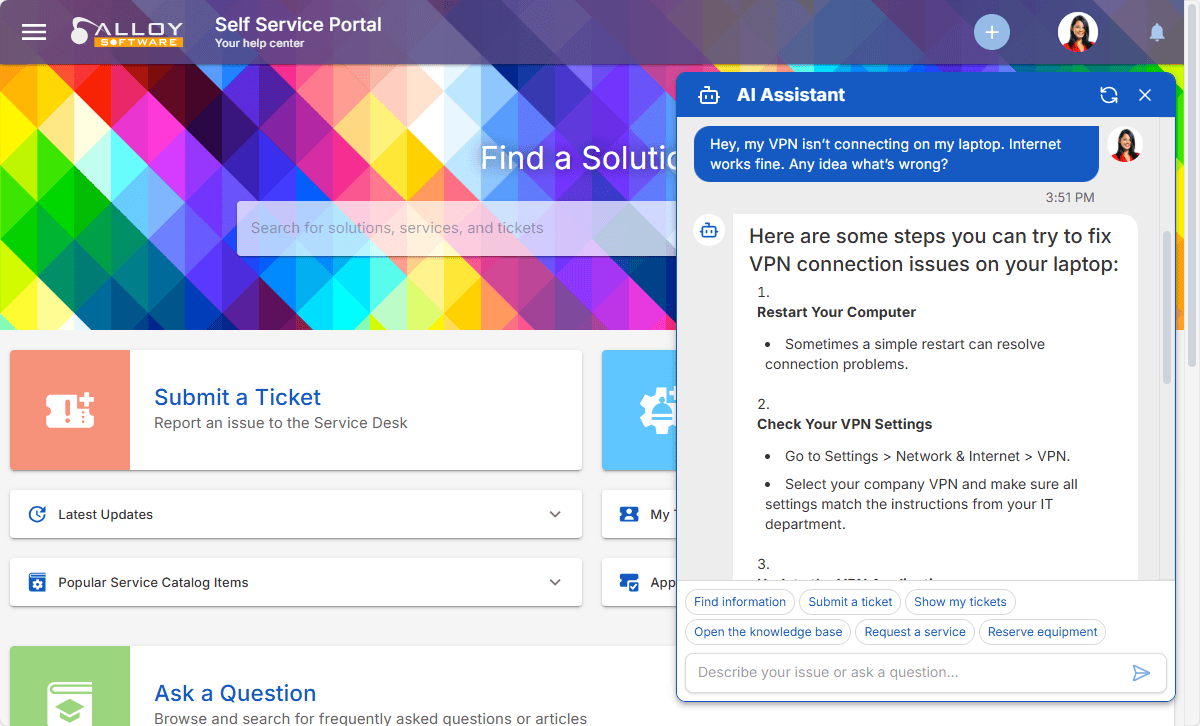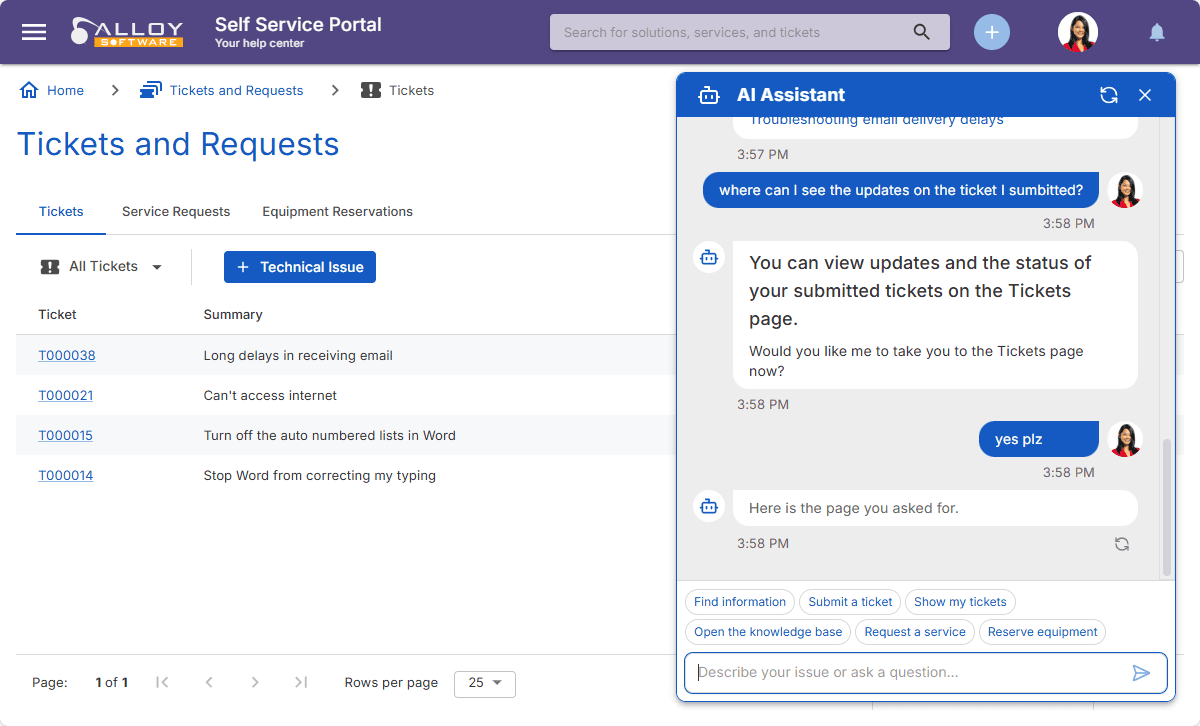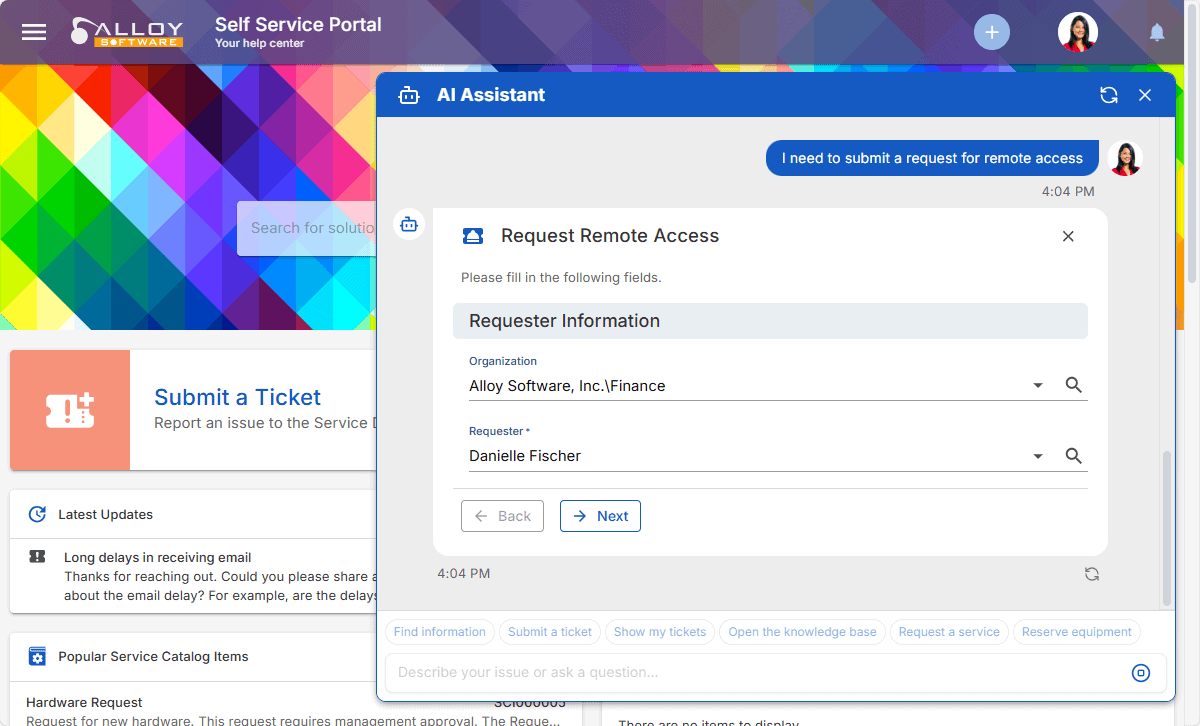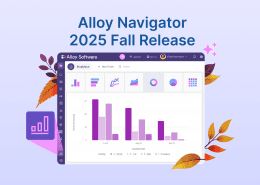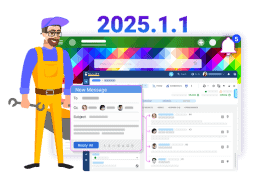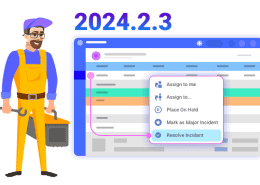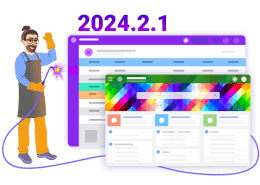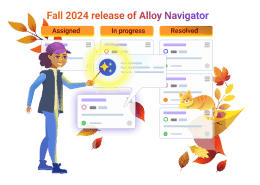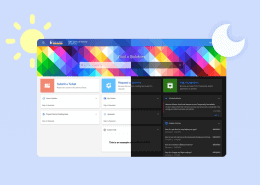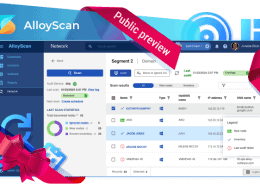Beyond that, entirely new AI-powered steps can be created for any objects or processes, not just tickets, with prompts and context designed to fit your workflows perfectly. Here are some examples we plan to implement in future versions. While these capabilities are not yet available out of the box, they show the direction of upcoming enhancements:
Dynamic knowledge creation: When resolving an incident or problem, AI can check whether relevant knowledge base articles already exist and automatically update or create new ones. This keeps your knowledge base accurate, complete, and immediately useful for the whole team.
Seamless multi-language support: AI provides automatic translation for communications across different languages, based on the requester’s organization or location. Agents can work in one language while requesters interact in another, ensuring everyone clearly understands the conversation.
Ticket assignment: AI automatically assigns tickets to the most appropriate technicians, taking into account classification, priority, current workload, and availability. For example, a high-priority network issue might be routed to a senior technician who is free, while routine requests go to the general queue. This ensures tickets are handled efficiently and by the right person every time.
SLA monitoring and alerts: AI continuously monitors ticket and request SLAs, predicts potential breaches, and notifies the right staff in advance. Teams can proactively resolve issues before deadlines are missed, keeping service levels high.
Asset lifecycle analysis: AI reviews asset usage, maintenance records, and software updates, and provides recommendations for replacements, upgrades, or redeployment. This helps IT managers optimize resources and reduce downtime.
To enable flexible AI integration, we designed a dedicated workflow element, AI Control, which allows the creation and deployment of customizable AI-powered steps across any object or process.


